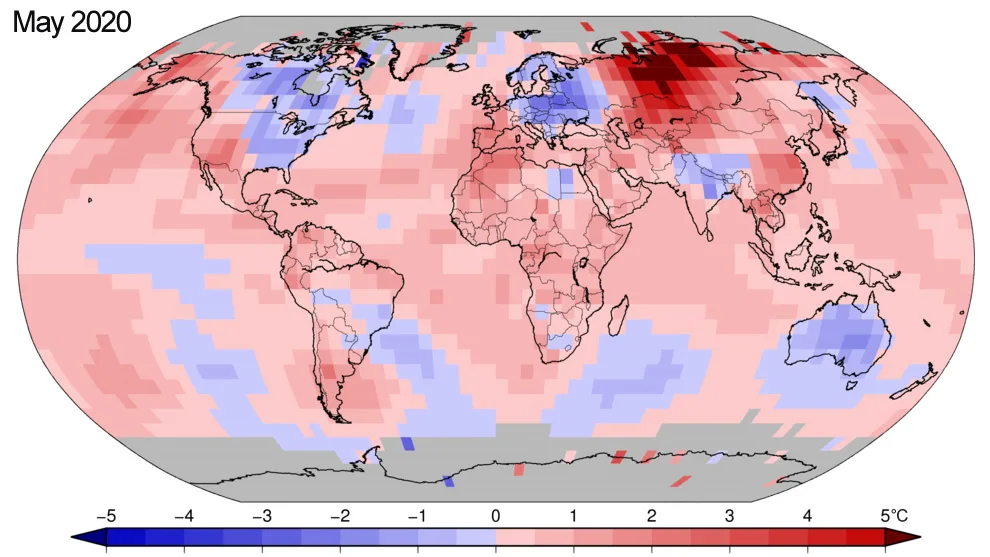
Last month, Earth experienced its hottest May in the record books
Siberia and England experienced significant climate extremes in May.
According to the world's leading climate records, May 2020 has now either matched or beaten May 2016 as the warmest month of May in at least the past 140 years.
NASA, NOAA, the Japanese Meteorological Agency and Europe's Copernicus Climate Change Service all now agree. Earth just experienced its hottest month of May on record.
As was reported at the beginning of June, according to the records of the Copernicus Climate Change Service, May 2020's global average surface temperature was 0.63°C warmer than the 1981-2020 average temperature. This beat out May 2016, which previously earned Copernicus' title of warmest May on record, by 0.05°C.
Now, NASA, NOAA and the JMA have provided their assessments of the month, and the consensus is effectively unanimous. According to NASA and the JMA, May's global average temperature exceeded May 2016's average. In NOAA's records, 2020 is now tied with 2016 for the hottest month of May.
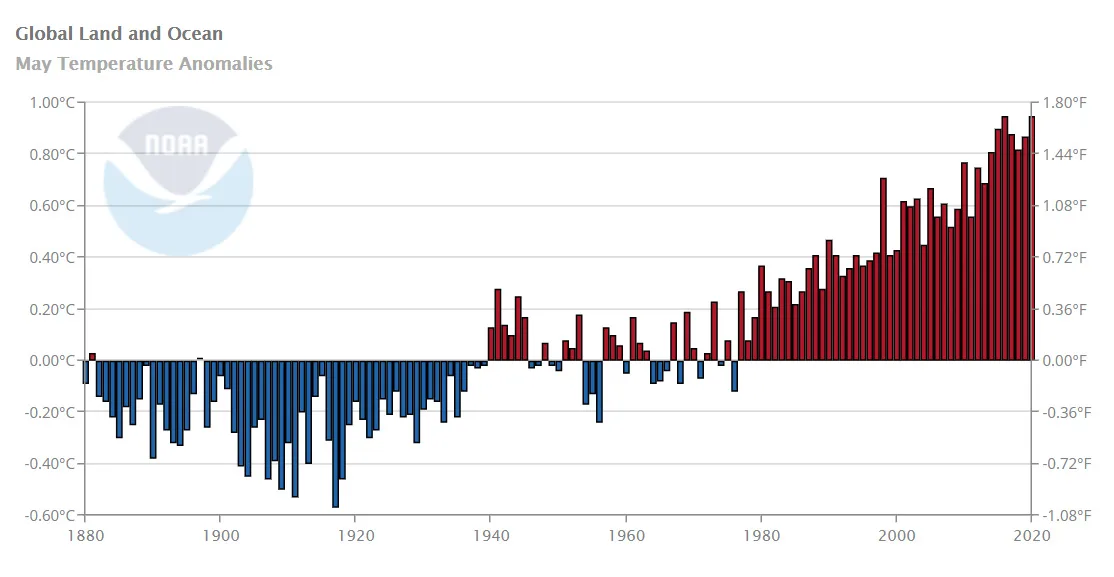
Partly, May 2016's record heat was due to the influence of the record super El Niño from 2015-2016, continuing to drive up temperatures around the globe at the time. Now, in 2020, there is neither an El Niño nor a La Niña pattern in the equatorial Pacific Ocean. This makes the global heat this year possibly a much more significant concern.
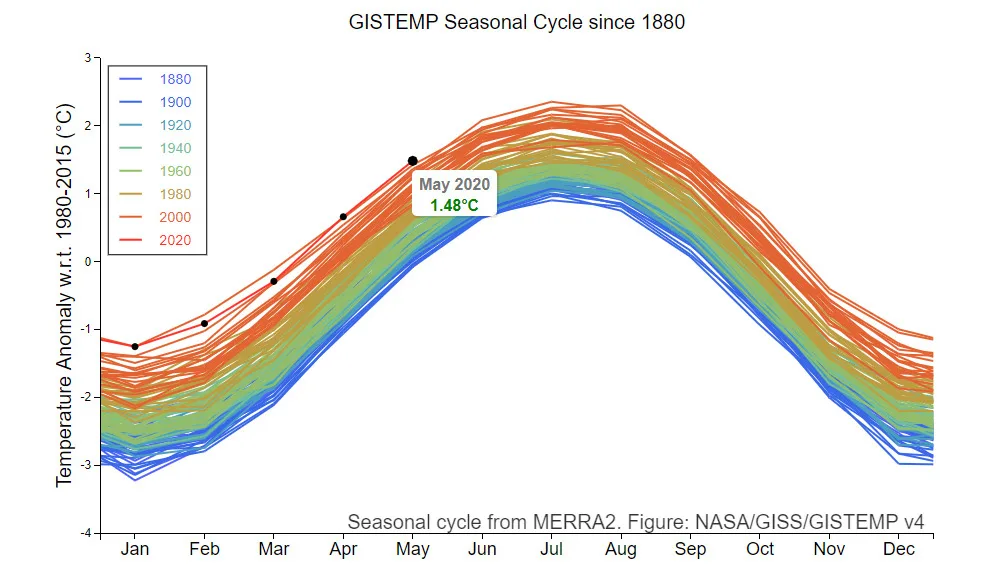
The GISTEMP seasonal cycle plot from the Goddard Institute of Space Studies shows monthly temperatures in comparison to those from previous years. May 2020 ranks as the hottest so far in their records. Credit: NASA GISS
STARK CONTRASTS
As the following map shows, there were some stark contrasts observed in different parts of the globe. In both North America and Europe, there were substantial temperature differences between the eastern and western parts of the regions.

May 2020 global temperature anomalies. Credit: Copernicus Climate Change Service
Notably, for Australia, May 2020 was the first month since October 2016, where their national average temperature was actually cooler than average.
Siberia, on the other hand, was the extreme hot spot on the planet. According to Copernicus, temperatures across the region averaged out at 10°C hotter than normal for the month of May!
SUNNY, DRY ENGLAND
Remarkably, although temperatures across England, Wales and the United Kingdom were only a bit above normal, they experienced their sunniest month on record, going back to 1929. The nation saw over 265 hours of sunshine in May, an increase of 43 per cent above normal.
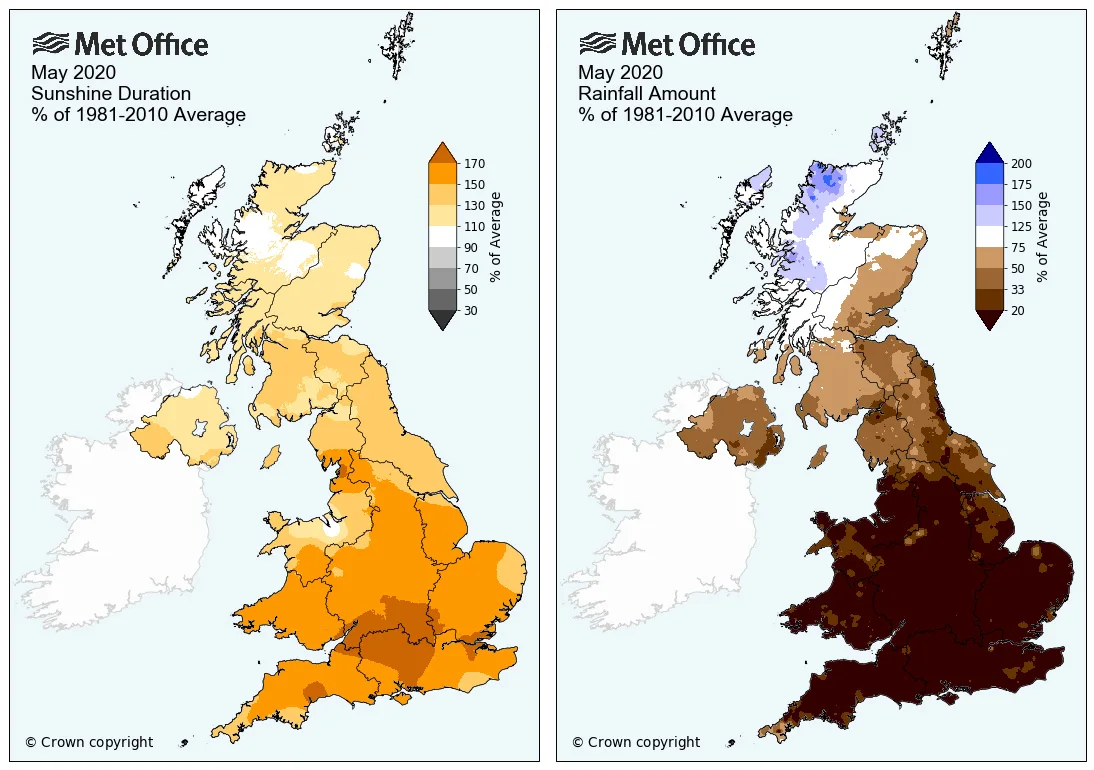
Sunshine and rainfall records for May 2020 reveal how sunny and dry the month was across the UK, and especially in England. Credit: UK Met Office
According to the UK Met Office, England and Wales both receiving just 17 per cent of their average May rainfall. That makes May 2020 the driest month of May on record for England, and the second driest May for Wales. For all of the UK, less than half the typical May rainfall fell last month.
"The principal reason for the dry and sunny weather is the extended period of high pressure which has been centred over or close to the UK," Dr. Mark McCarthy, the head of the Met Office's National Climate Information Centre, said in a Met Office report. "This has suppressed the development of clouds and rainfall over the UK while allowing plenty of sunshine to reach the surface."
WHAT'S IN STORE FOR 2020?
In addition to tracking global temperatures month-by-month and performing a yearly assessment, NOAA scientists also keep a running tally of how the year is progressing. This provides them with an idea of whether the current year is shaping up to be an average year, or whether it will be the next hottest year in the record books.
So far, in 2020, temperatures have been far above any other year except 2016. This year is even giving the warmest year on record a run for its money, however.
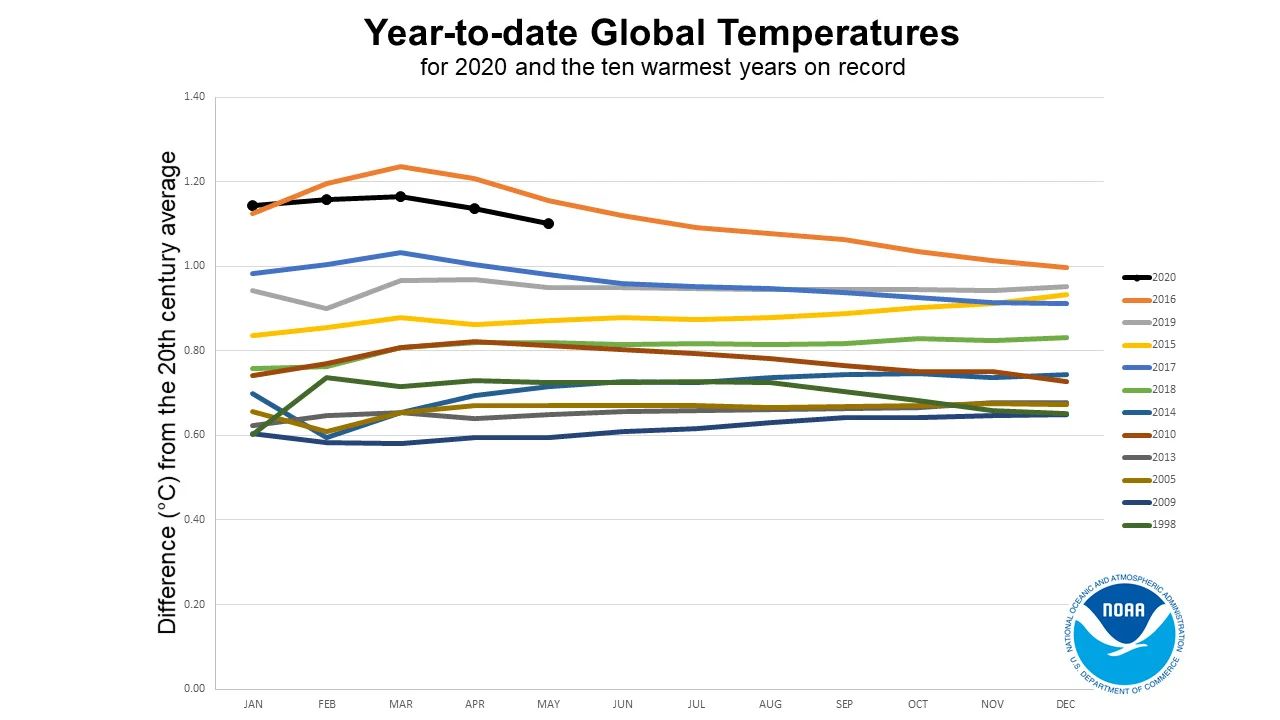
Year-to-date global temperatures for 2020 (black) are only slightly cooler than 2016 (orange). Credit: NOAA
Based on the above graph, NOAA gives a roughly 50/50 chance as of May, that 2020 will become the next hottest year on record. This is down from 75 per cent as of March, and nearly 70 per cent in April, but this could end up being neck-and-neck race by the end of the year.
Sources: Copernicus | UK Met Office | NOAA | NASA | JMA











